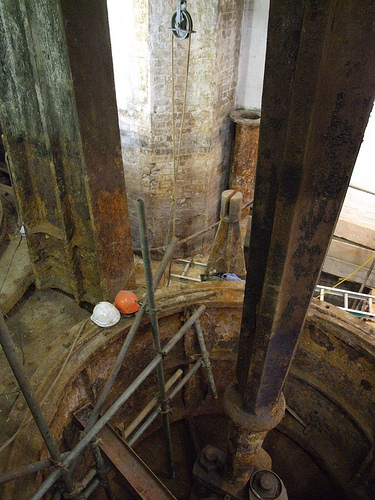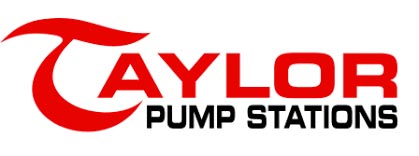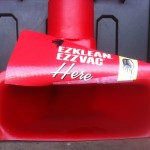Energy Saving Pump Stations
If engineers would design with low resistant piping in the form of HDPE pipe and long turn smooth wall fittings, to create truly energy saving pump stations, it truly would be the gift that keeps on giving!
Years ago now, back in the late 80’s there was a much touted breakthrough in the electrical field called high temperature superconductivity. In brevity, the excitement was born from the precept if our electrical system, IE the conductors, can operate under a condition of zero resistance, energy savings throughout the world would be dramatically reduced. Whether an electrical substation or a Waste Water Lift Station the goal at least when it comes to electrical current movement is zero resistance. Superconductivity and the possibility to conduct electricity across the United States and beyond with no resistance is exciting. Likewise, it is just as exciting to think of superconductivities counterpart that of moving of fluids with pumps at low friction/resistance factors as an equally enticing breakthrough and this engineering feat is happening now. At Taylor Pump Stations our packaged water and Wastewater lift stations utilize a two system approach to maximize the savings in electricity use. Since utilizing varying types Frequency Drives is the predominant method of energy savings within the Packaged Water and Waste Water Lift Station at Taylor Pump Station we first look at the low hanging fruit of energy savings: friction reduction. An additional benifit in utilizing low co-efficient of friction materials such as HDPE and long radius ells is there is usually initial cost savings in the materials when compared to Ductile Iron whether cement lined or not and also in the install cost of the lighter weight HDPE materials.
”To Save or Not to Save”, on energy consumption, that is the question.
 Think about it, many design professionals are stepping over dollars to save a dime by concentrating only on premium efficient motors and variable speed drives. The first observation is these components are expensive to acquire and in many instances have a negative overall cost savings when initial capital cost are considered along with additional maintenance costs. The search for energy savings and the mandate for energy efficient electric motors was started by our government back in the early nineties. A well intentioned program and yet only 8 % of energy loss is related to the electric motor. If in all Water and especially in Waste Water Pump applications if we could lower the Hazen-Williams friction factor to that of plastic pipes one very prominent event happens! In the prior statement the experienced applications engineer could conclude the sentences main point is that the savings grow each year as the piping remains relative smooth. The consequence of using low friction plastics, long radius turns of the same materials is that the pressure is reduced immediately. More importantly it’s the long term benefits of plastic pipe that really begins to reap benefits in saved energy consumption. By studying the Hazen-Williams formula we see the exponential increase in friction as the annular area begins to close from corrosion over time. The buildup makes the pump work hard to overcome a rising main restricted and in many cases the pressure line can be a mile long. Any Pumping system in which pressure is reduce of course has a direct relationship to energy savings. So, long after the engineer stands on the “Alley OOP” engineering belief that Ductile Iron is the only way to go- the pump goes to work and every year thereafter to pump through a highly restricted steel line. It is happening 24 hrs a day, 7 days a week, throughout the year, pumps are straining and drawing excess energy all because engineers ”Can’t see the light through the corroded steel pipe”. Pumps in all there forms consume nearly 25% world’s energy. If engineers would design with it in mind to reduce the head requirements of fluid handling pumps by utilizing the high quality, proven strong HDPE piping and fitting products available Cities and private owners alike would have multiple lines of savings to add up. Probably a few less sanitary sewer overflows would occur as there would be less pump failures due to lower friction factors of HDPE piping resulting in greater MTBF of the motors. Up to 2% savings in KWH’s of electricity used as the pumps work below the curve possibly being able to lessen the horsepower of the motor. Less carbon footprint in the reduced times needed to “Pig” plastic pipe as compared to the cleaning intervals required for ductile iron piping. No repairs to the HDPE from corrosive soil conditions that eat into steel and ductile pipe.
Think about it, many design professionals are stepping over dollars to save a dime by concentrating only on premium efficient motors and variable speed drives. The first observation is these components are expensive to acquire and in many instances have a negative overall cost savings when initial capital cost are considered along with additional maintenance costs. The search for energy savings and the mandate for energy efficient electric motors was started by our government back in the early nineties. A well intentioned program and yet only 8 % of energy loss is related to the electric motor. If in all Water and especially in Waste Water Pump applications if we could lower the Hazen-Williams friction factor to that of plastic pipes one very prominent event happens! In the prior statement the experienced applications engineer could conclude the sentences main point is that the savings grow each year as the piping remains relative smooth. The consequence of using low friction plastics, long radius turns of the same materials is that the pressure is reduced immediately. More importantly it’s the long term benefits of plastic pipe that really begins to reap benefits in saved energy consumption. By studying the Hazen-Williams formula we see the exponential increase in friction as the annular area begins to close from corrosion over time. The buildup makes the pump work hard to overcome a rising main restricted and in many cases the pressure line can be a mile long. Any Pumping system in which pressure is reduce of course has a direct relationship to energy savings. So, long after the engineer stands on the “Alley OOP” engineering belief that Ductile Iron is the only way to go- the pump goes to work and every year thereafter to pump through a highly restricted steel line. It is happening 24 hrs a day, 7 days a week, throughout the year, pumps are straining and drawing excess energy all because engineers ”Can’t see the light through the corroded steel pipe”. Pumps in all there forms consume nearly 25% world’s energy. If engineers would design with it in mind to reduce the head requirements of fluid handling pumps by utilizing the high quality, proven strong HDPE piping and fitting products available Cities and private owners alike would have multiple lines of savings to add up. Probably a few less sanitary sewer overflows would occur as there would be less pump failures due to lower friction factors of HDPE piping resulting in greater MTBF of the motors. Up to 2% savings in KWH’s of electricity used as the pumps work below the curve possibly being able to lessen the horsepower of the motor. Less carbon footprint in the reduced times needed to “Pig” plastic pipe as compared to the cleaning intervals required for ductile iron piping. No repairs to the HDPE from corrosive soil conditions that eat into steel and ductile pipe.
The order is in, for your next Packaged Waste Water Lift Station, give it the easy flow characteristics of HDPE. At Taylor Pump Stations we believe in using simple but strong easy to clean components. We specifically designed and received a U.S Patent on an easy to clean wet well, we call the EZZ-Klean Station.


